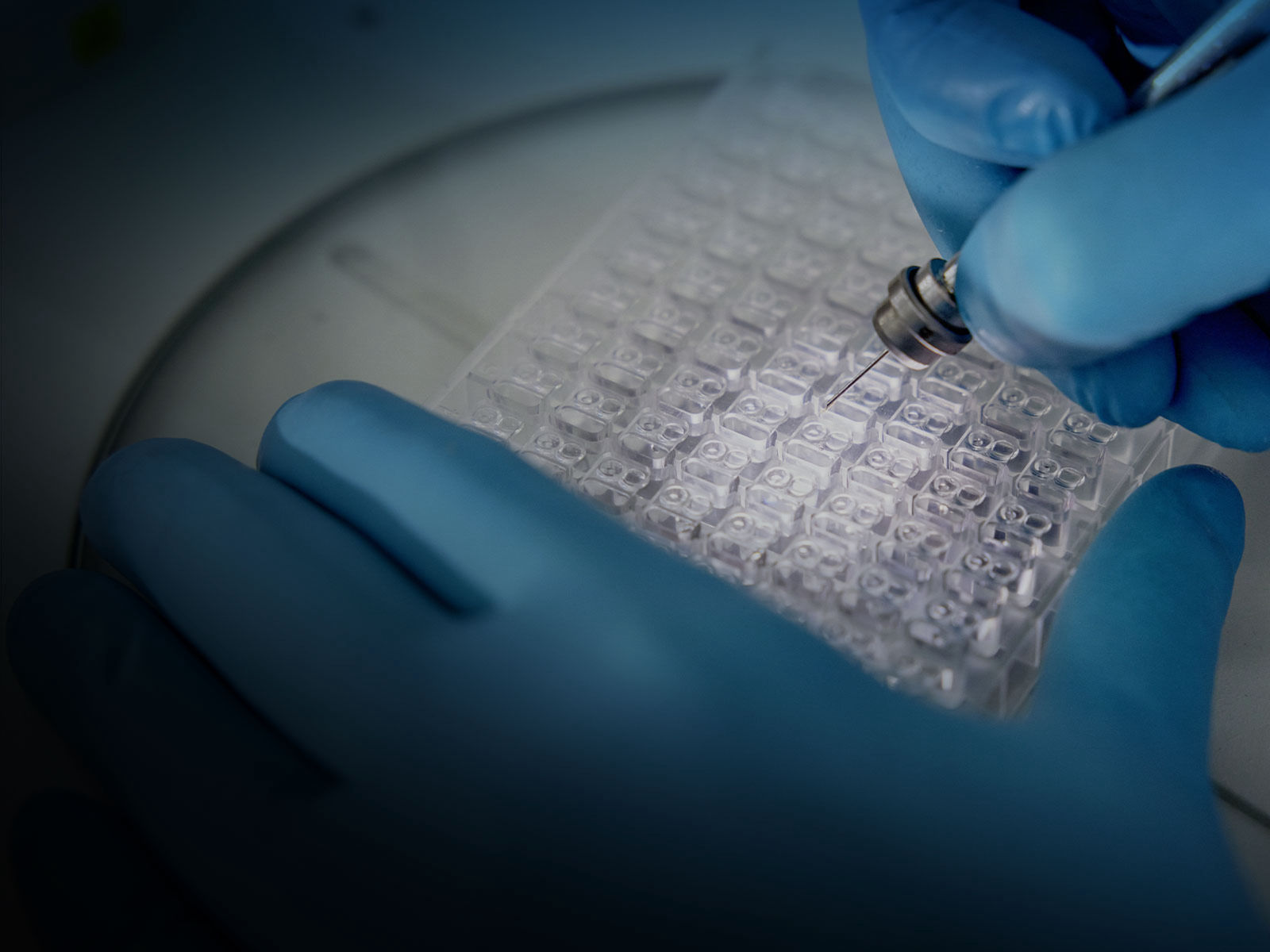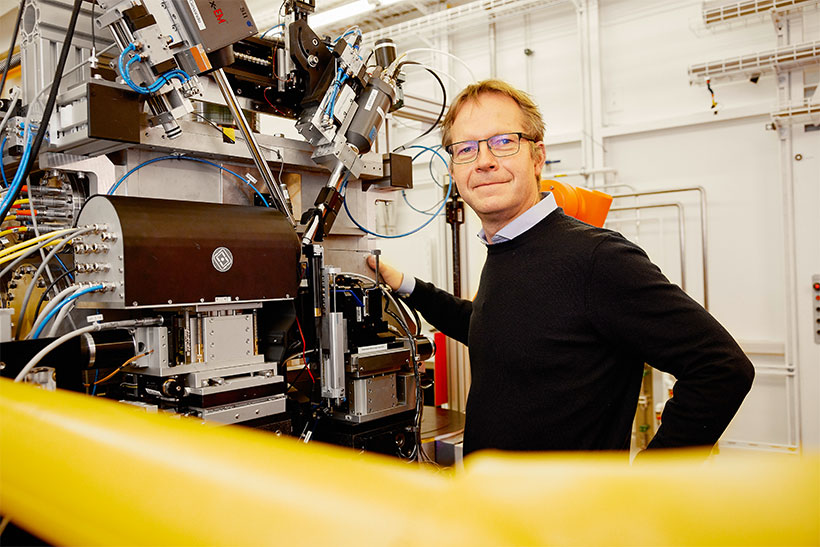
Speed dating for active ingredients
New pathogens threaten human health, and the spread of infectious diseases and multidrug-resistant germs requires new approaches with tailored active substances. PETRA IV could decisively accelerate the search for new substances.
X-ray crystallography is an effective way of searching for new active pharmaceutical ingredients. The idea is to create crystals of the potential active substances together with the molecule they are supposed to attack, such as a particular protein.
These crystals are then illuminated with intense X-rays, for example those produced by PETRA III. As a result, the experts can precisely identify whether a drug candidate binds to the protein as hoped or not. PETRA IV has the potential to make this drug screening much faster and thus more efficient.

“In the future, we want to use silicon chips on which a large number of crystals can be grown simultaneously, which can then be X-rayed in a single operation, fully automatically.”

At the beginning of the coronavirus pandemic, researchers at DESY managed to examine 7700 crystals in a very short time, each involving a different active ingredient candidate. In the process, a number of substances were identified that were binding to a specific protein of the virus – its main protease. If a drug could be found that blocked this protease, it would knock out the virus.
In subsequent tests, one of these active substances has proved particularly promising, and it is now being studied in more detail. Later, the team also looked at other target proteins, such as cathepsin L, which is produced naturally in the human body, and came across a number of candidates that might be able to inhibit this protein, which is important for the replication of the virus.
“We hope to increase throughput five- to tenfold, meaning the we will be able to analyse up to ten times as many proteins in the same time, to identify new active substances.”
On top of this, the X-rays from PETRA III that have been used so far have been monochromatic, i.e. with a single wavelength. PETRA IV would allow polychromatic – multicoloured – radiation to be used. This increase in radiation intensity ought to speed up the measurements considerably.
Among other things, the higher throughput could produce a solid foundation of data with which to develop powerful artificial intelligence algorithms. The “AlphaFold” algorithm, for instance, is already capable of calculating the spatial shape of many proteins. Eventually, similar programmes, based on the measurement data from PETRA IV, for example, could predict which active substances will bind particularly effectively to a protein – a potential paradigm shift for drug screening.

Heidrun Hillen
I am happy to answer your questions about PETRA IV.
Further research topics

Healthcare
How can diseases be better tackled?

New materials
How can we save resources?

Energy
How can we make more resilient materials?

New technologies
What do we need for the digital world of tomorrow?

Earth and the environment
How do we preserve our ecosystems?

Cultural heritage
How can we preserve our cultural treasures?

